Carn Liath Broch, near Golspie, Sutherland

During yet another great stay at Grannie's Heilan' Hame near Dornoch, I was determined to get the kids off their phones and tablets and see some of the sights this part of Scotland had to offer.
We had been to Dunrobin Castle many times and had never ventured further north than that, but after reading about Carn Liath Broch a short distance past the castle and further along the North Coast 500 route, a visit was definitely in order!
Passing Loch Fleet
From Grannies Heilan Hame, we followed the route to Golspie alongside the beautiful nature reserve of Loch Fleet. Here we saw many birds, but my kids were most interested in the fat seals basking on the sand banks. Skelbo Castle also features prominently looking out over the loch; it has stunning views, to say the least.

Reconnecting with the A9 motorway, we headed towards Golspie, passing through it and then up to the familiar lead up to Dunrobin Castle. This time we continued; the forests at Dunrobin gave way to open coastal views.
Carn Laith Broch Car Park
A short distance ahead, we began to see the signs for Carn Liath Broch on the brown tourist sign, common throughout Scotland. We turned left off the A9, there is a long strip of road available for parking at the right, or you can turn left to arrive at a smaller parking area specifically for the broch.
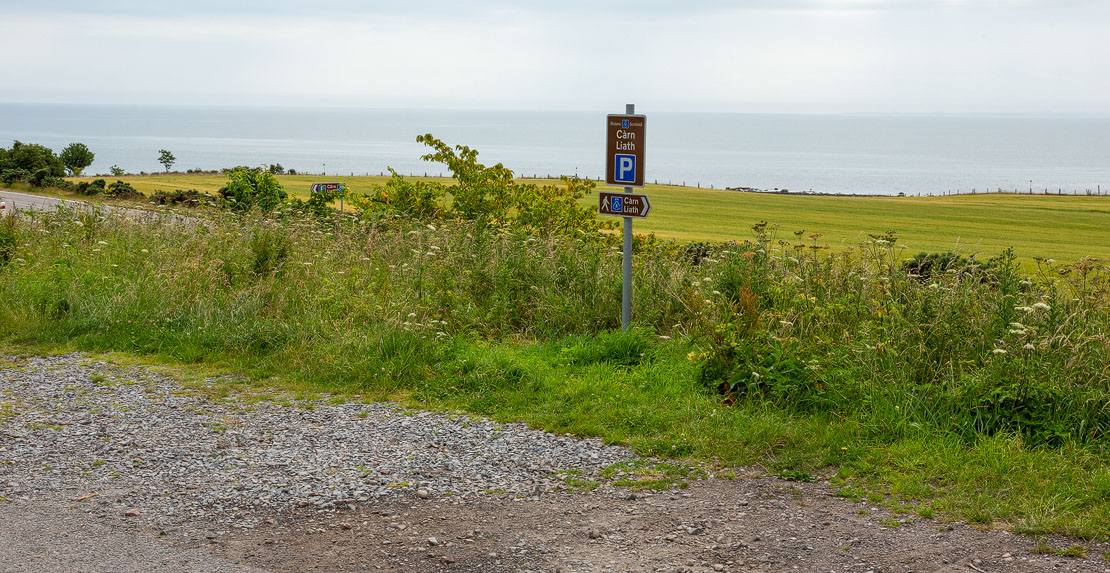
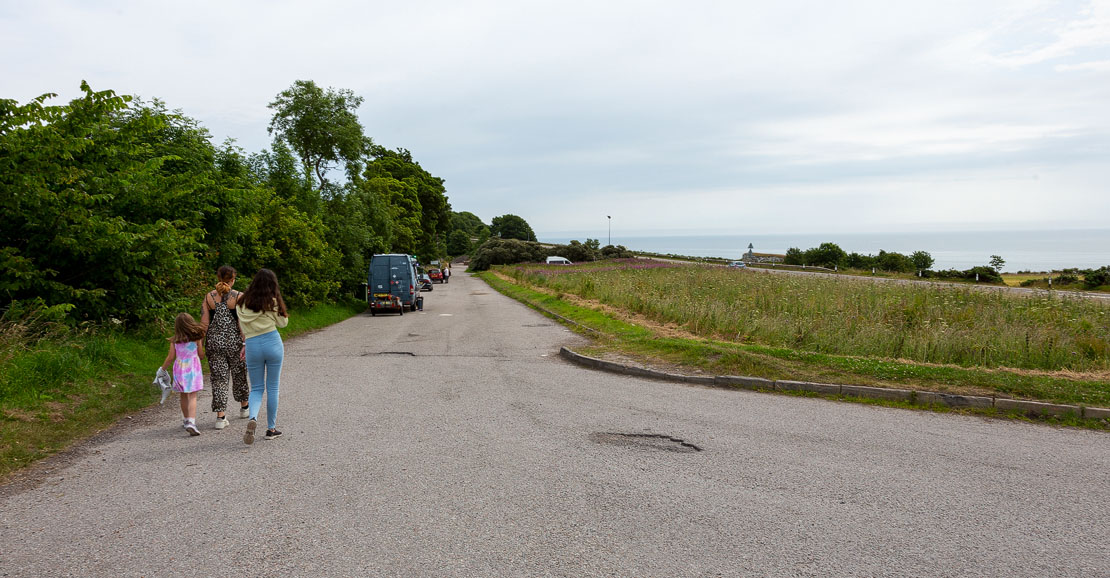
You must follow a path back along the A9 through a short wooded area, then to the crossing point over the A9. Be very careful crossing here; the traffic is fast.
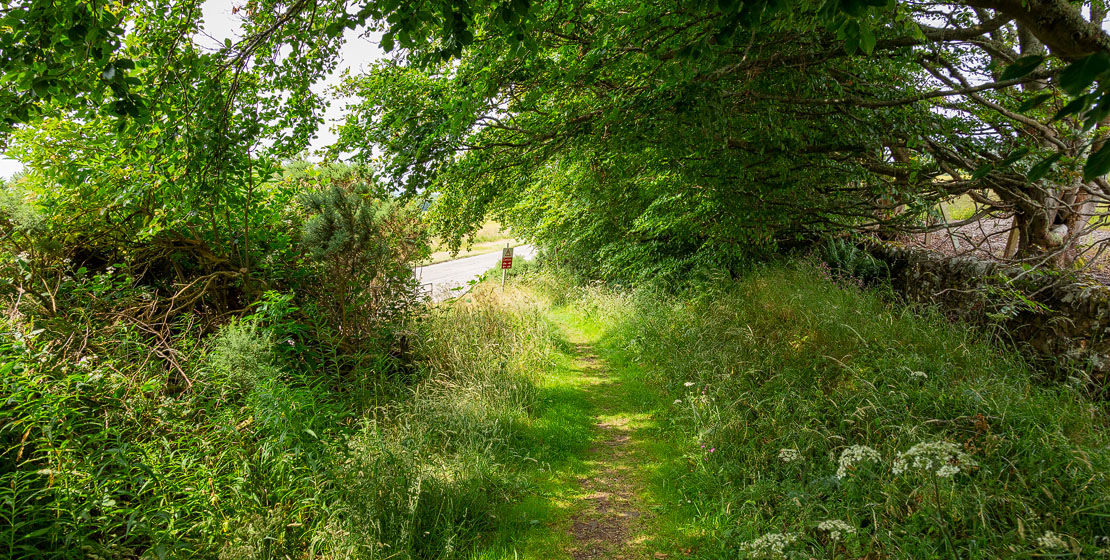
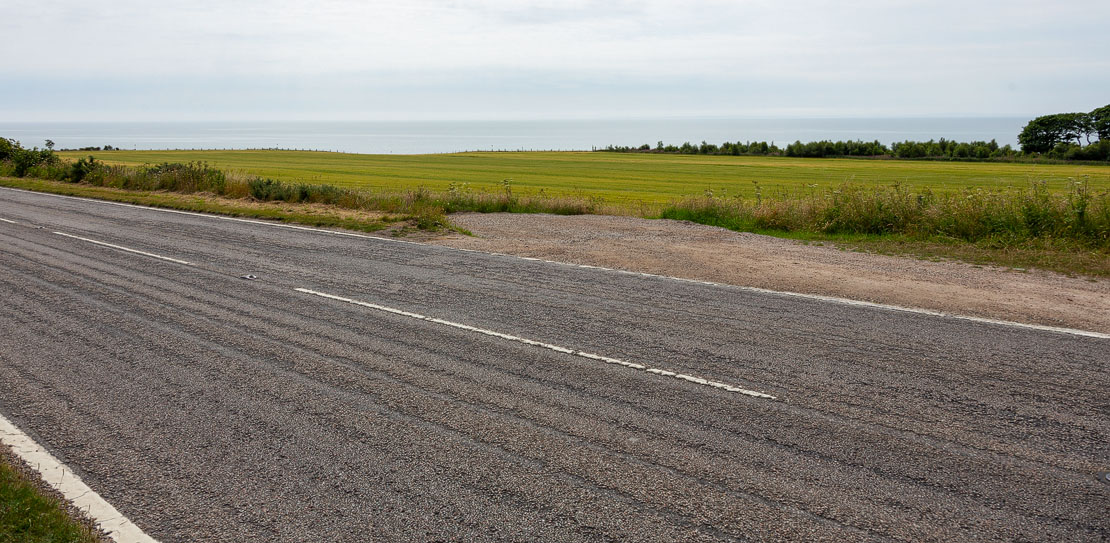
Follow the dirt track over a short distance to arrive at the site entrance; a wooden gate will allow you access. The already impressive-looking ruin of the broch stands before you, beckoning you to explore its secrets!
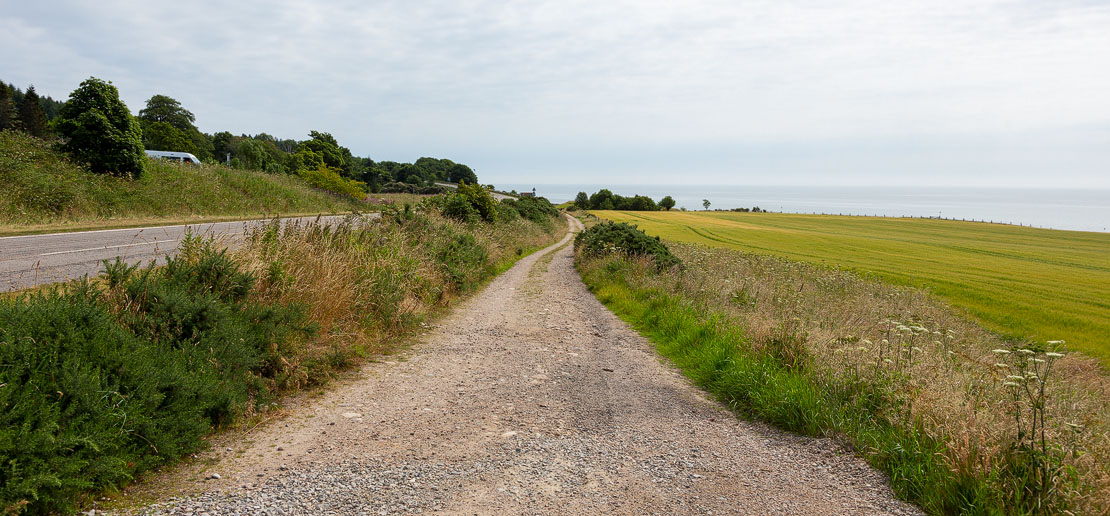
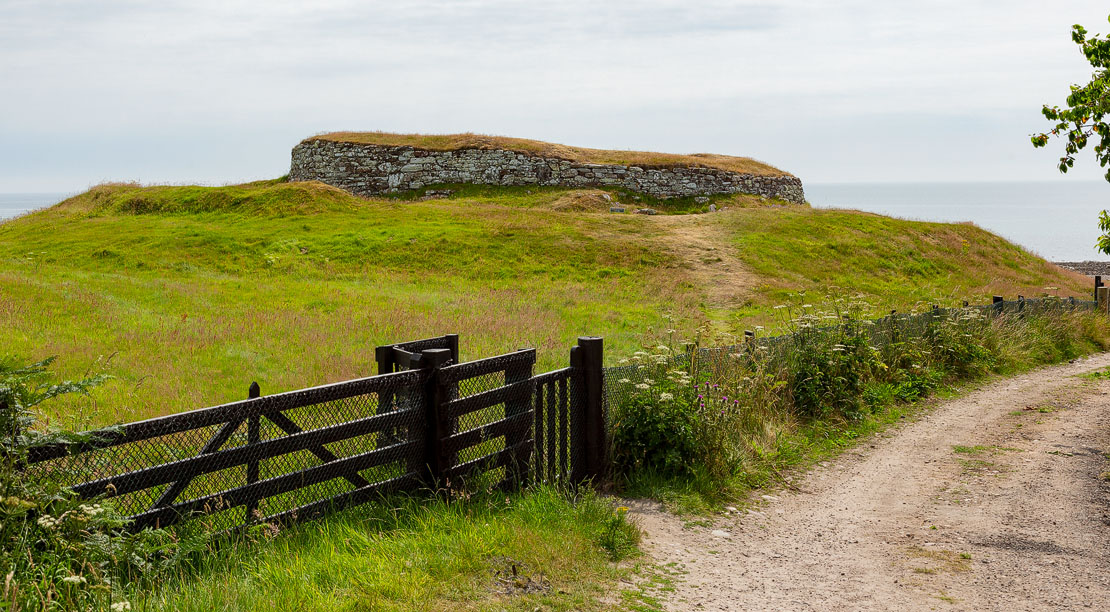
Iron Age Broch
Carn Liath Broch (sometimes named the Grey Cairn) is an Iron Age broch built sometime between 400 and 200 BC. It was initially thought to be a burial cairn, perhaps similar to the ones found at Clava Cairns near Inverness and Corrimony Cairn near Drumnadrochit, but it was actually a living space, storage structure, and defensive position built into one.
Brochs are a type of roundhouse; the double-skinned dry stone walls would have originally been much higher than the ruin lets on and capped with a thatched roof. One example in Shetland is over 13 meters tall - brochs are considered the tallest prehistoric structures in northwest Europe! Some of Scotland's oldest brochs are 2300 years old, and around 500 sites, mainly in north and west Scotland, have been identified as the sites of ancient brochs.
The exact use of these brochs is unknown, but the example here at Carn Liath had many outbuildings constructed around it; maybe it served the same purpose as a castle keep in ancient times - for defence and as a status symbol to project power in the local area.
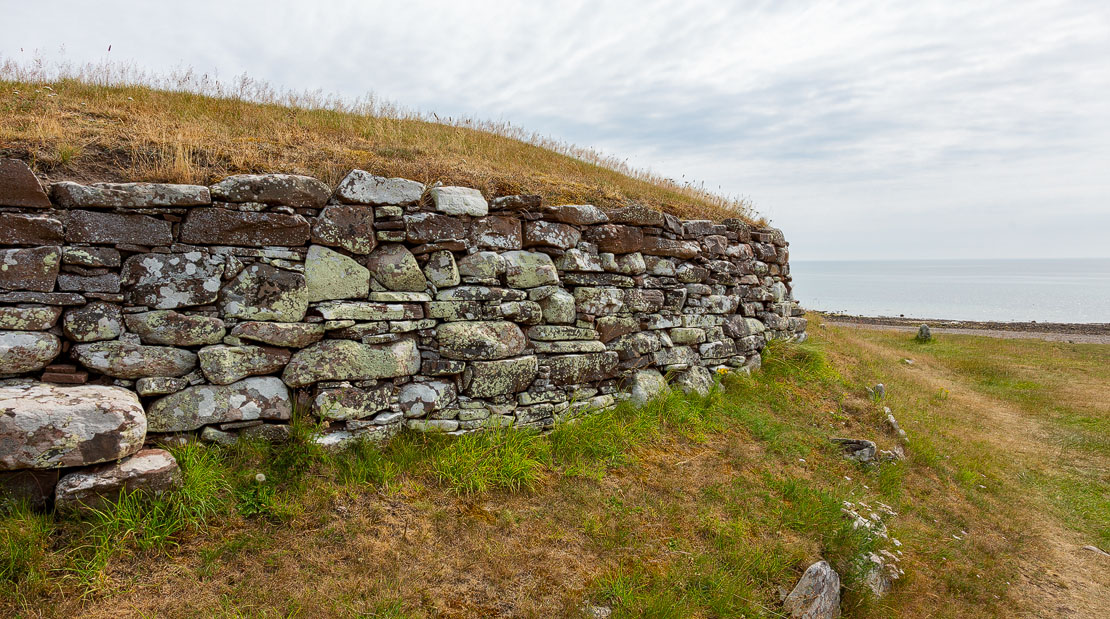
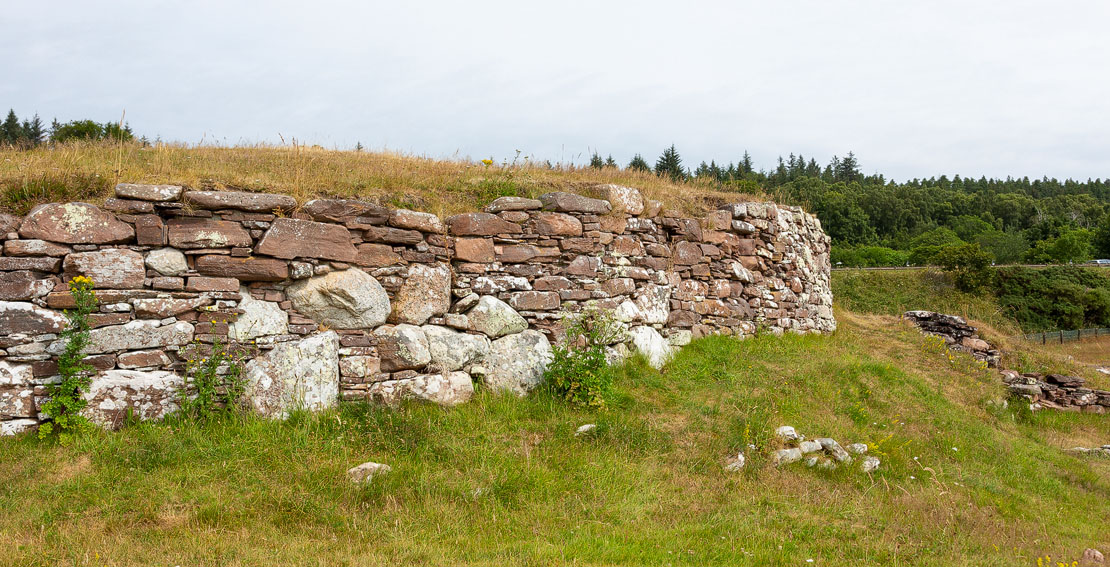
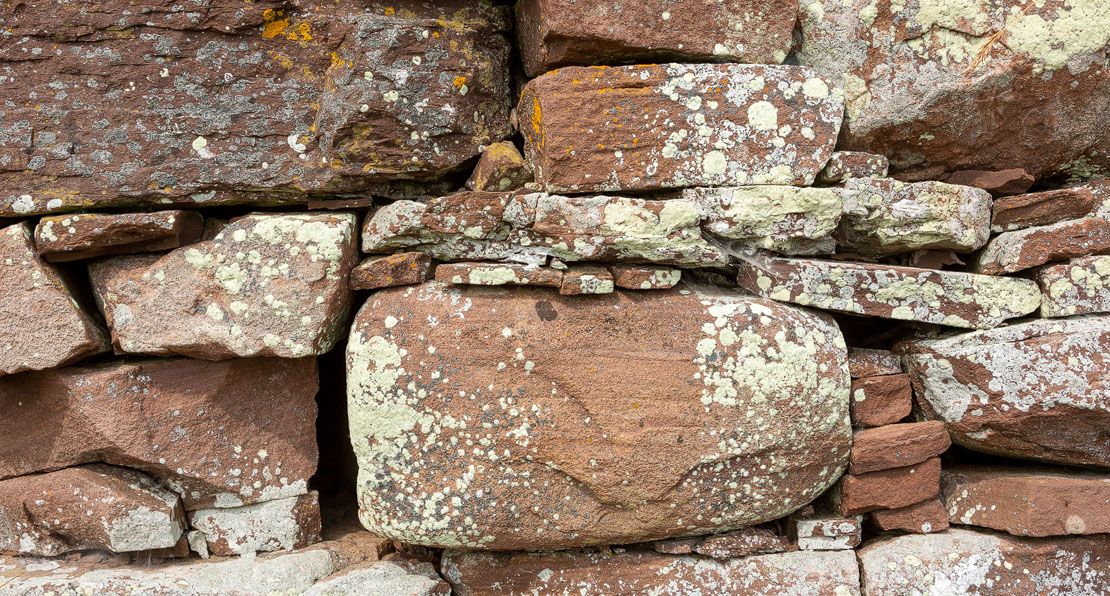
Making our way up to the broch walls, they are still impressively high and a great example of dry stone walls from ancient times. The site is well kept, and some beautiful wildflowers grow at various spots, almost in memorial to the people that once lived there.
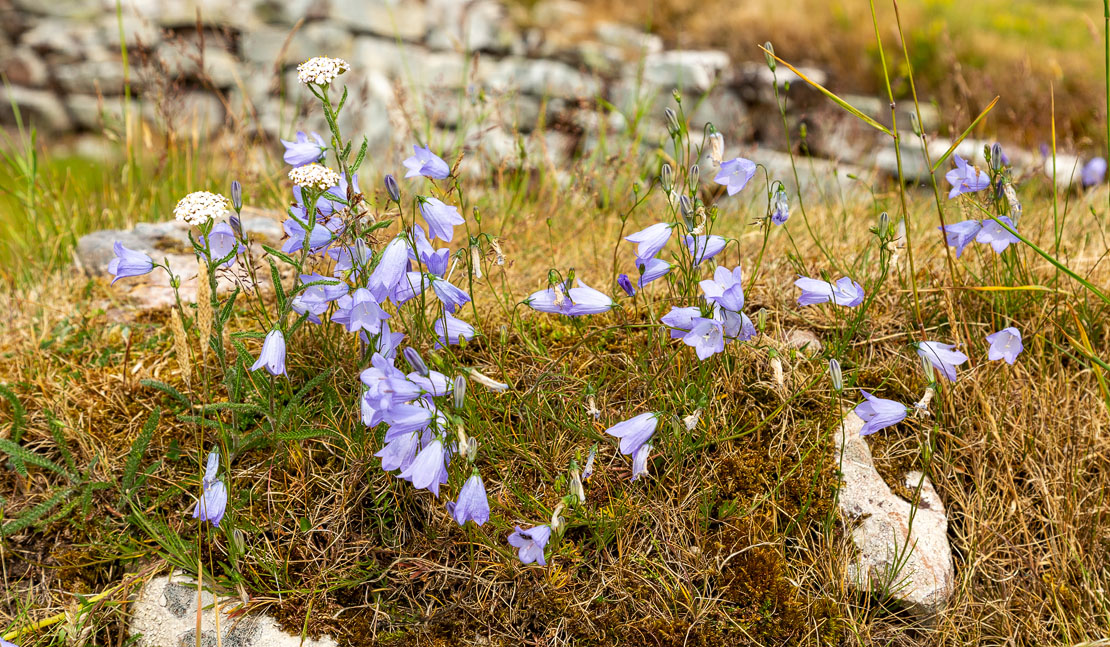
Tracking round to the right, we came to the main frontage of the broch, including the entrance passage and one of Historic Environment Scotland's fantastic information boards, which gave further insight into the ancient structure before us.

Entering Carn Liath Broch
The kids were in like a shot and entered the main central area of the broch. I followed, squatting my head down below the lintel above the entrance passage. I noted a small chamber to the right, which is marked as a guard cell on the layout diagram.
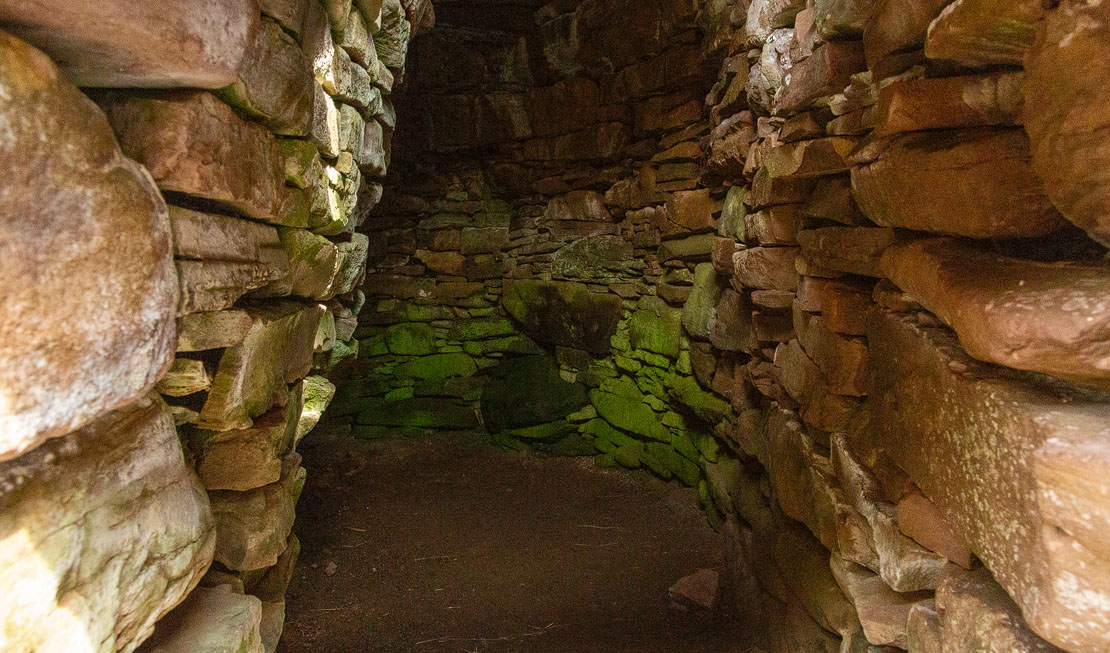
The central space here must have been something special in its day and given a wow factor to visitors of the time not used to seeing large stone structures. Again the interior walls are a fine example of dry stone construction and have remained in place for thousands of years; they seem quite loose; it's a wonder that the locals haven't taken from the site over the centuries as an easy source of building materials.
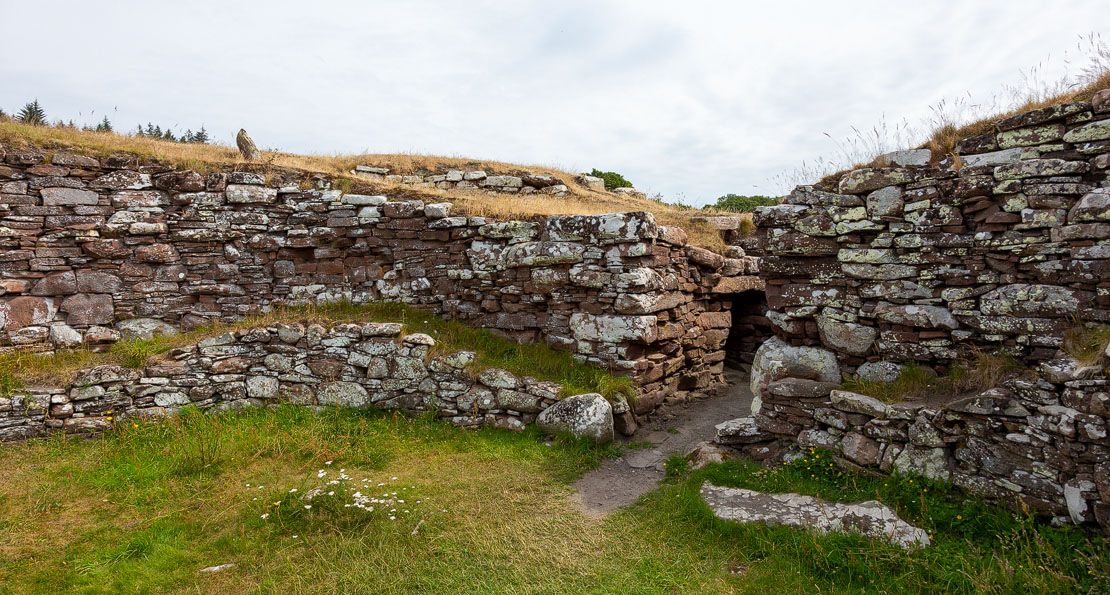
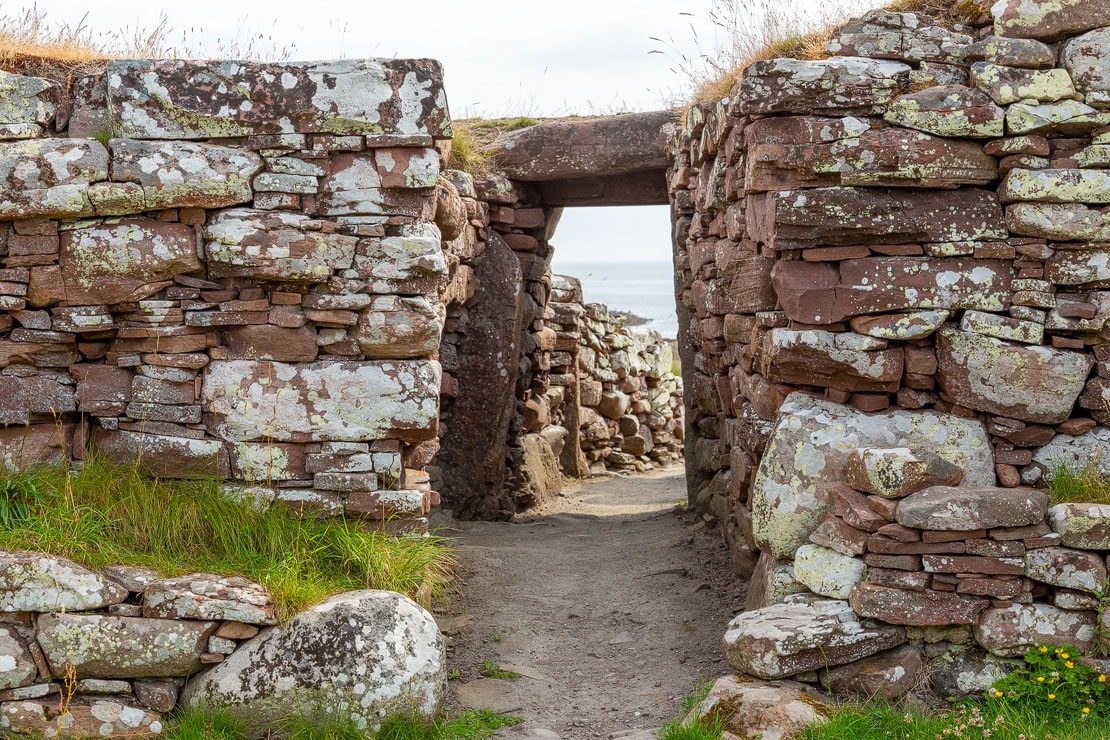
This central space is still tall enough (3.6 metres) that you can't see to the outside, making this ruin all the more impressive. The diameter of the centre is about 10 metres.
Recent excavations discovered many post holes, meaning there was likely an internal wooden structure to the broch. Deep pits or chambers were also found in the broch floor but have been filled in completely.
Again the kid's attention span was short, and they made for the staircase, which rises up within the south west wall... Ascending the stair, it took me to the wall head, which can be walked upon around the perimeter of the broch. The views from here are fantastic, both looking out to the beach, across the sea to Embo, and west to Dunrobin Castle and the Duke of Sutherland monument, high up on Ben Bhraggie.
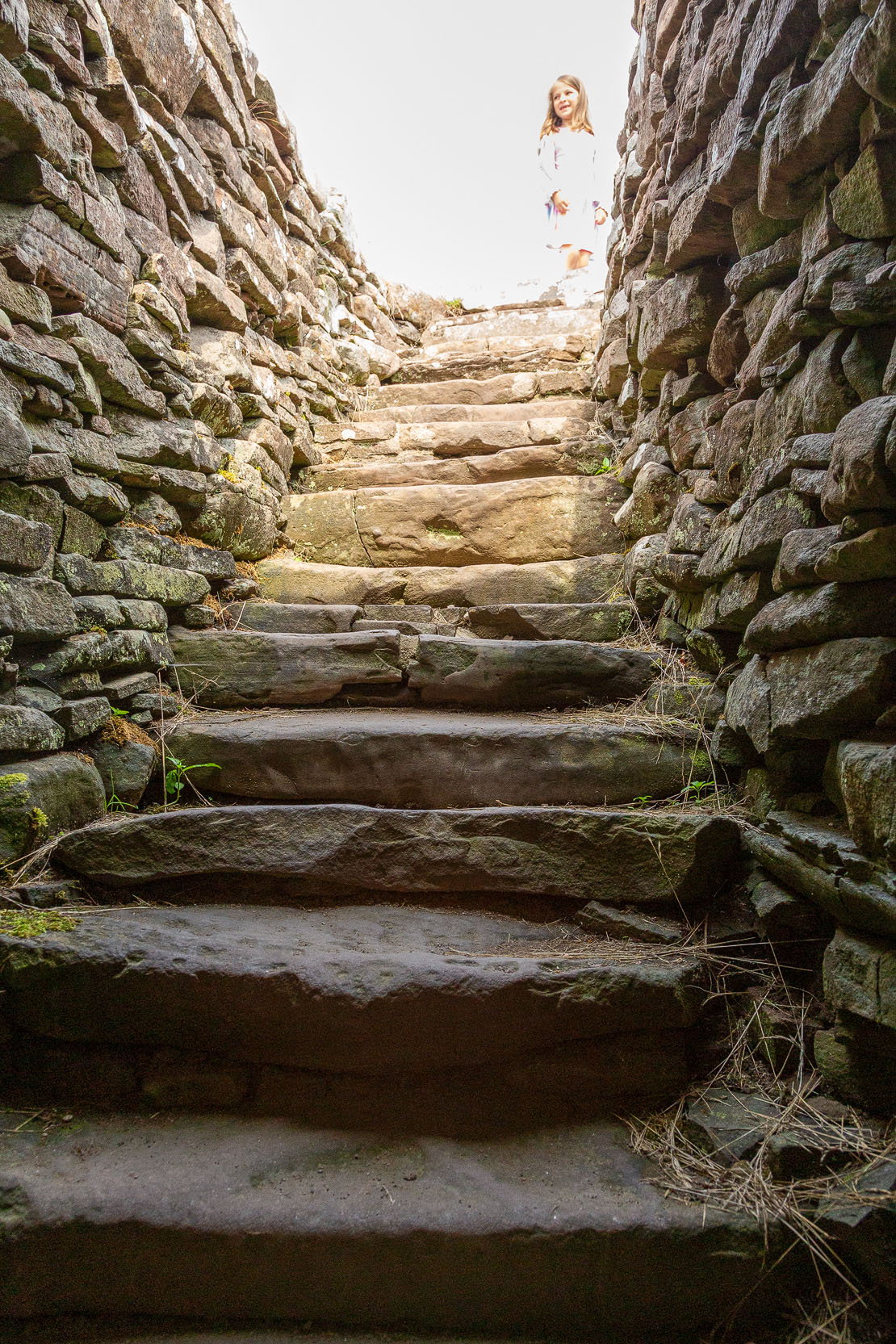
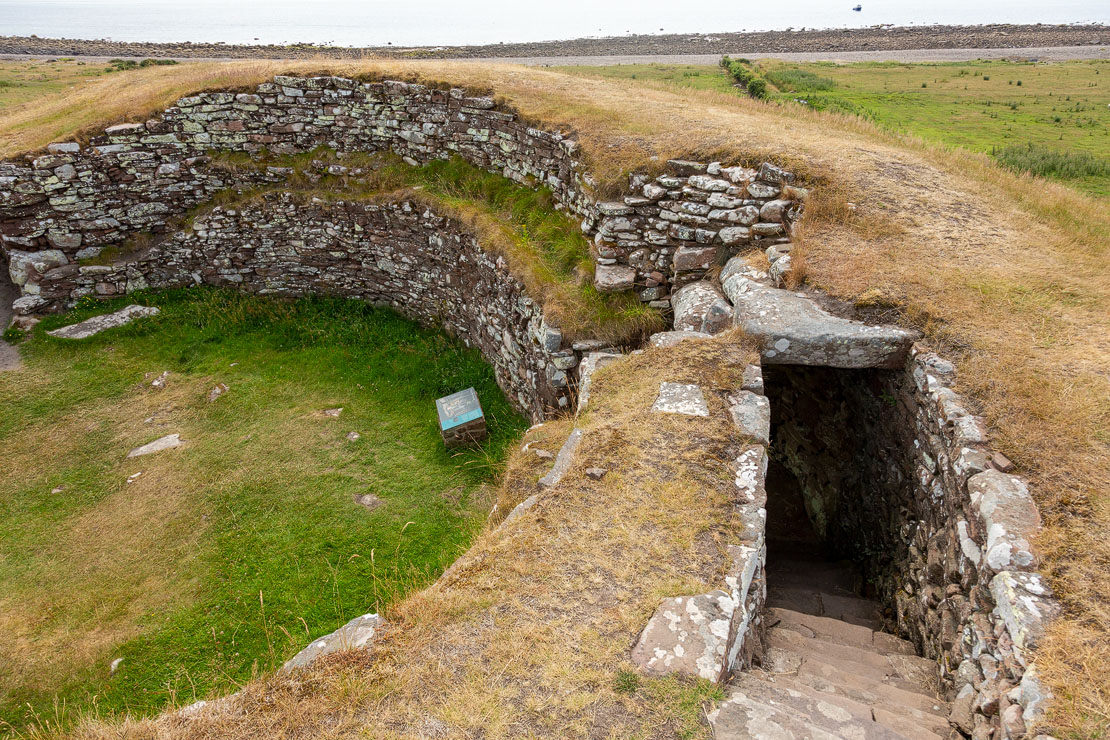
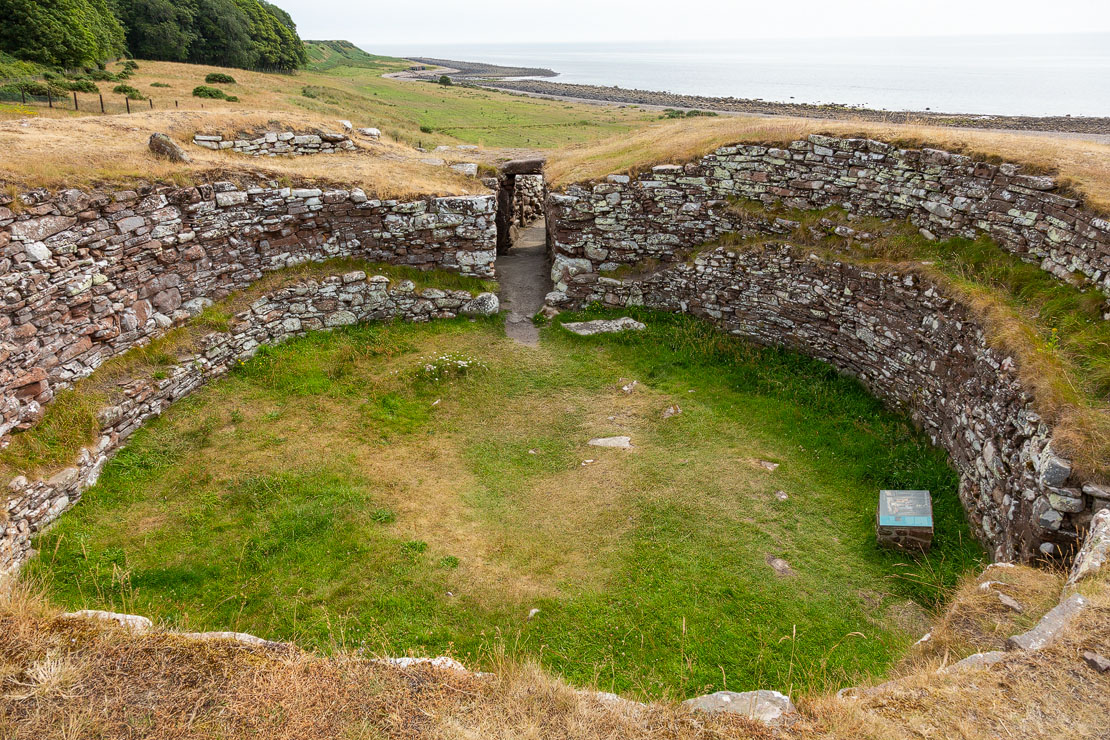
The associated village around the broch can also be seen, with remnants of buildings and obvious earthworks in the immediate area.
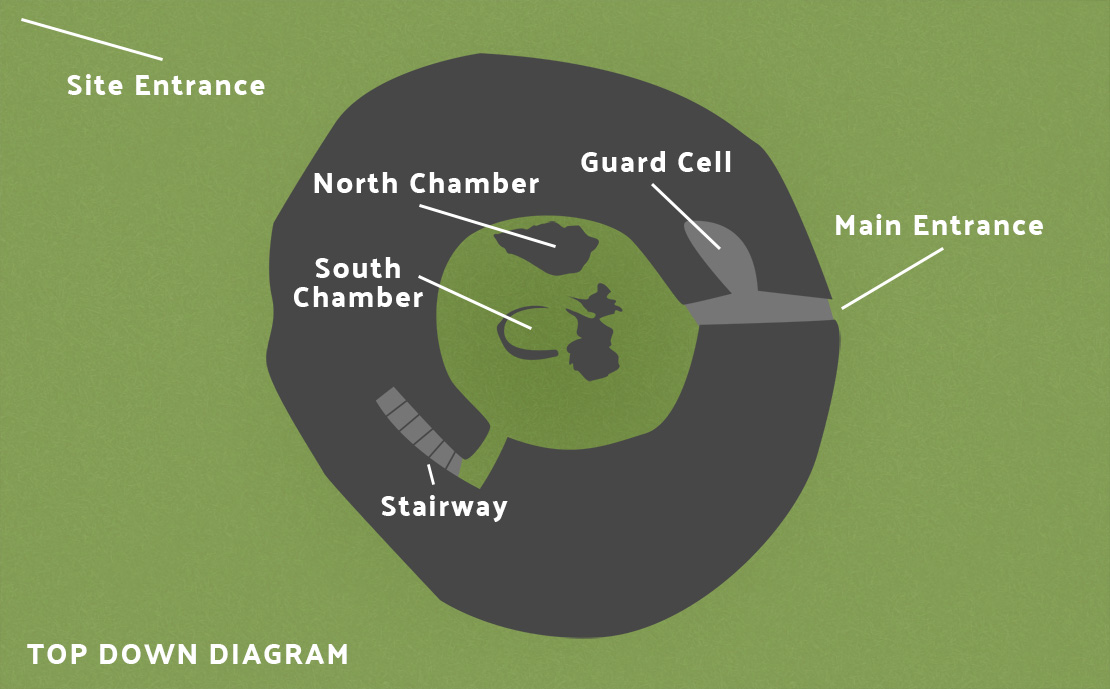
Duke of Sutherland excavations in 1868
During Victorian times, the Duke of Sutherland ordered an excavation of the Carn Liath Broch. Unfortunately, the archaeological techniques of this time were not great and did much damage to the site.
The excavation did find a wealth of artefacts, though, including:
-
A silver brooch.
-
Whalebone.
-
Two bronze plates, beaten flat from a bronze ingot.
-
A comb.
-
A shale washer necklace.
-
A rusted iron blade.
-
Pottery.
-
Steatite/soapstone cups.
Many of these amazing finds can be seen at the small museum just off the main gardens at Dunrobin Castle, including some fantastic Pictish stones (not linked to Carn Liath).
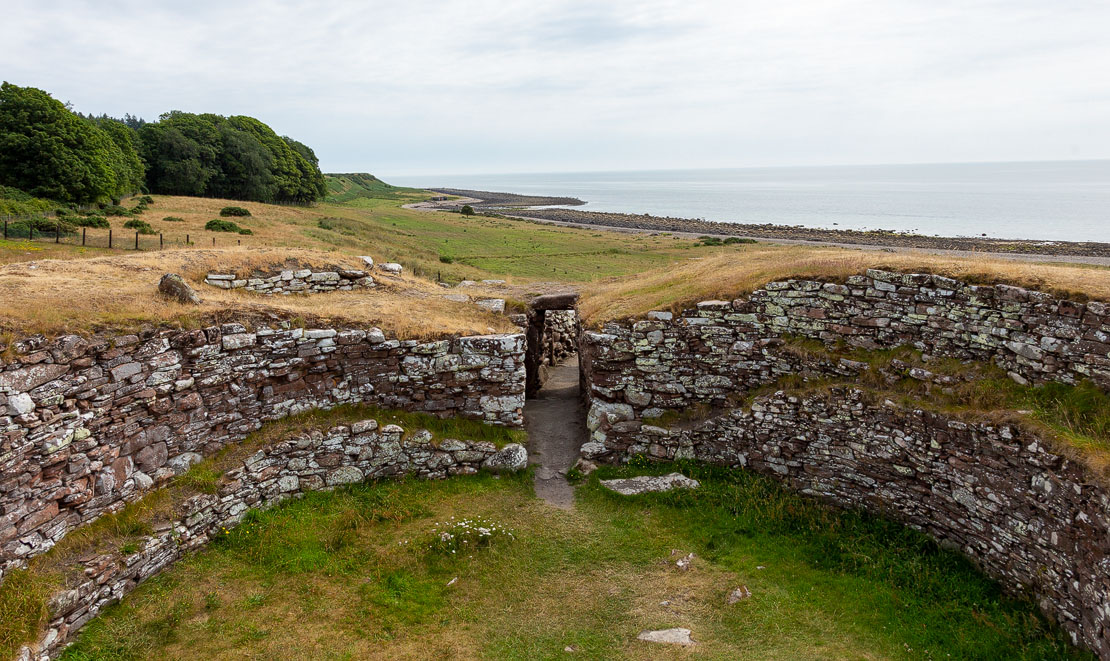
Bronze Age Burial
During an excavation in 1986, a bronze age cist burial was discovered, along with a food vessel, confirming this site was important long before the broch had been built.
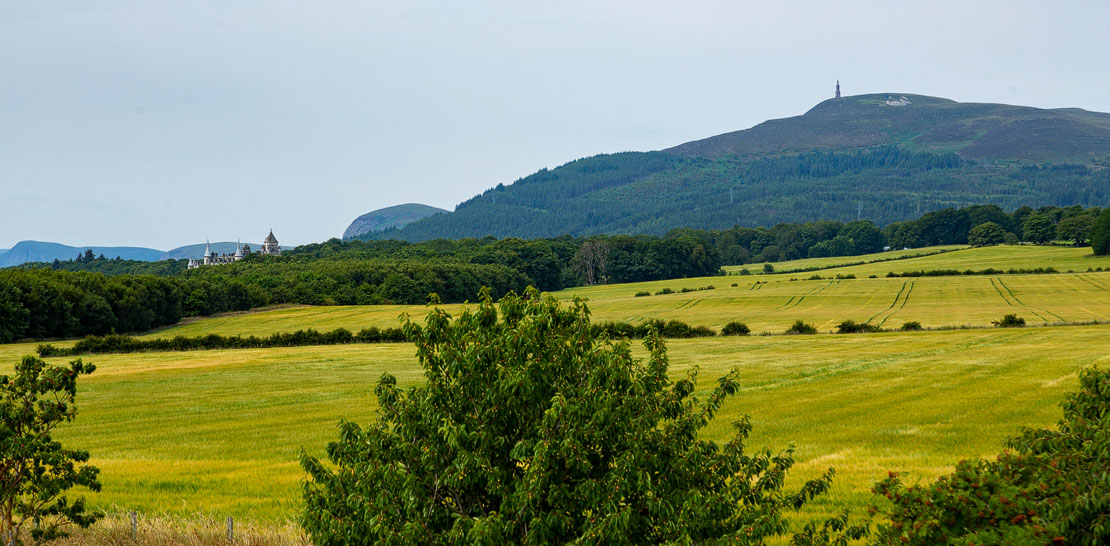
Historic Environment Scotland
Carn Liath Broch is in the care of Historic Environment Scotland (HES).
Carn Liath Broch Damage in February 2022
Historic Environment Scotland staff discovered a new hole had been dug near the outside wall of the broch. The main concern was that this was an area that had never been excavated, and artefacts may have been taken.
To rub salt in the wound, it seems visitors had taken stones from the broch and created a new cairn/pile on the site. HES commented:
“Carn Liath Broch is an archaeological site of national importance and is protected as a scheduled monument. Unauthorised works on scheduled monuments are illegal and can irreplaceably damage our monuments and cultural assets, causing us to lose pieces of our past forever.”
Historic Environment Scotland spokesperson
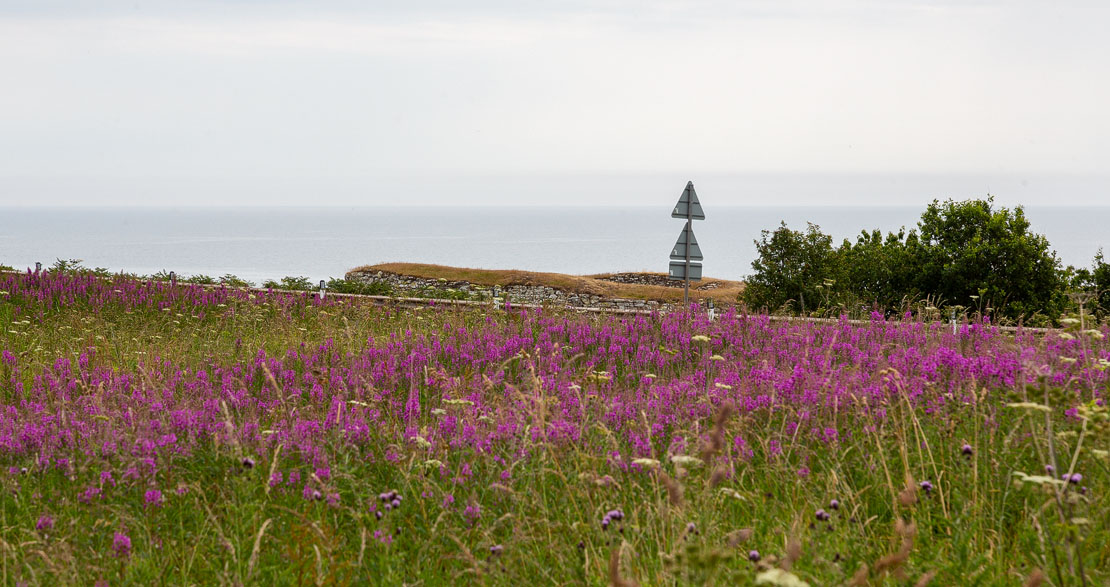
What is a Broch?
A broch is a large circular roundhouse, normally constructed with hollow drystone walls, built in the Iron Age in the north Scottish mainland. There are thought to be at least 500 sites around Scotland and its islands where brochs existed, but Caithness/Sutherland has the largest concentration, which I hope to cover in future articles.
Brochs are classified as "complex Atlantic roundhouses".
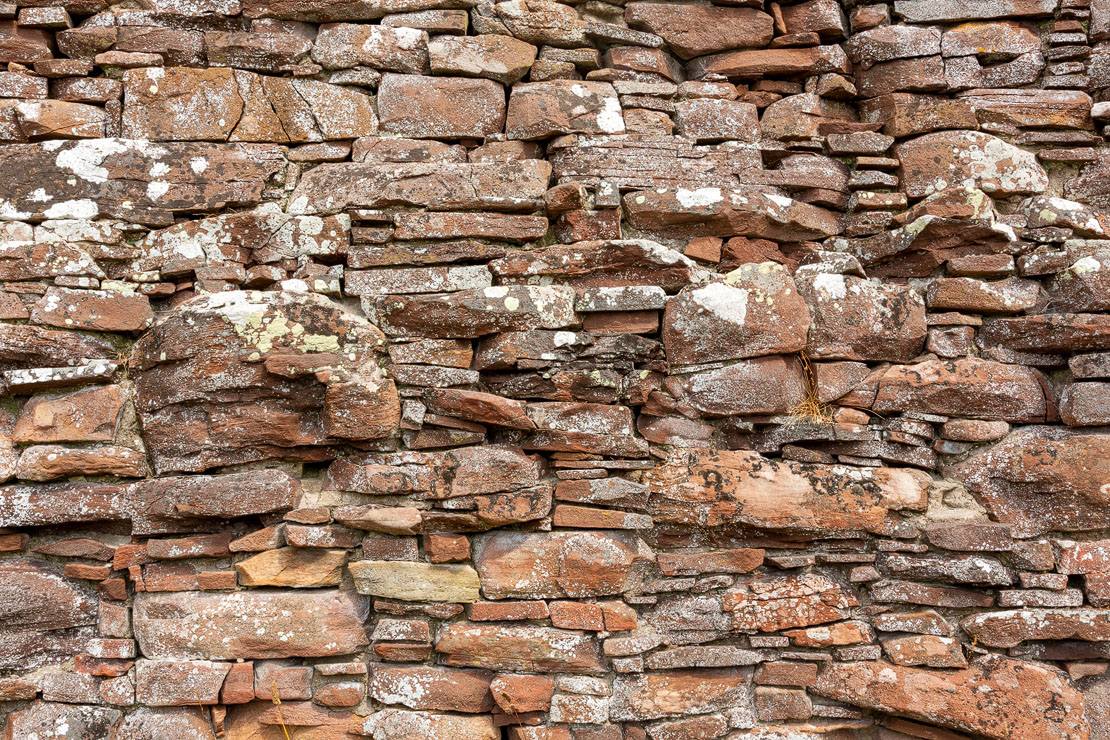
How old is Carn Liath Broch?
Carn Liath Broch is about 2100 years old, give or take a hundred years.
Is it free to visit Cairn Laith Broch?
Yes, it's free, there is no entrance fee to visit the broch, and it is always open.
Is Cairn Liath Broch within the gardens of Dunrobin Castle?
Originally, it was, but as it stands now, it is some distance from the castle and entirely separate.
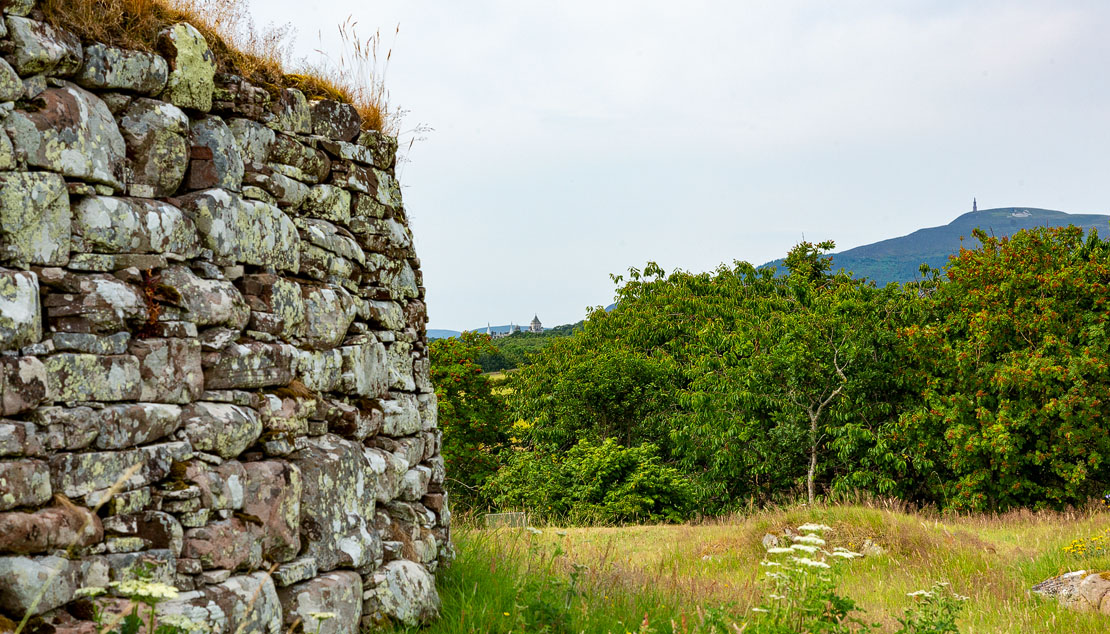
Conclusion
My family all loved this fascinating look around one of the best-preserved examples of Scotland's brochs in the Scottish Highlands. There is more information available at the Dunrobin Castle Museum and Historylinks Museum in Dornoch.
We backtracked along the dirt path and crossed the A9 back to our car. We decided to have a picnic at one of our favourite spots - the Big Burn Walk on the outskirts of Golspie, a fantastic wee forest route down a deep gully with many bridges and waterfalls.
If you like old ruins, then Skelbo Castle is well worth a visit, and the town of Dornoch has a fantastic Cathedral.
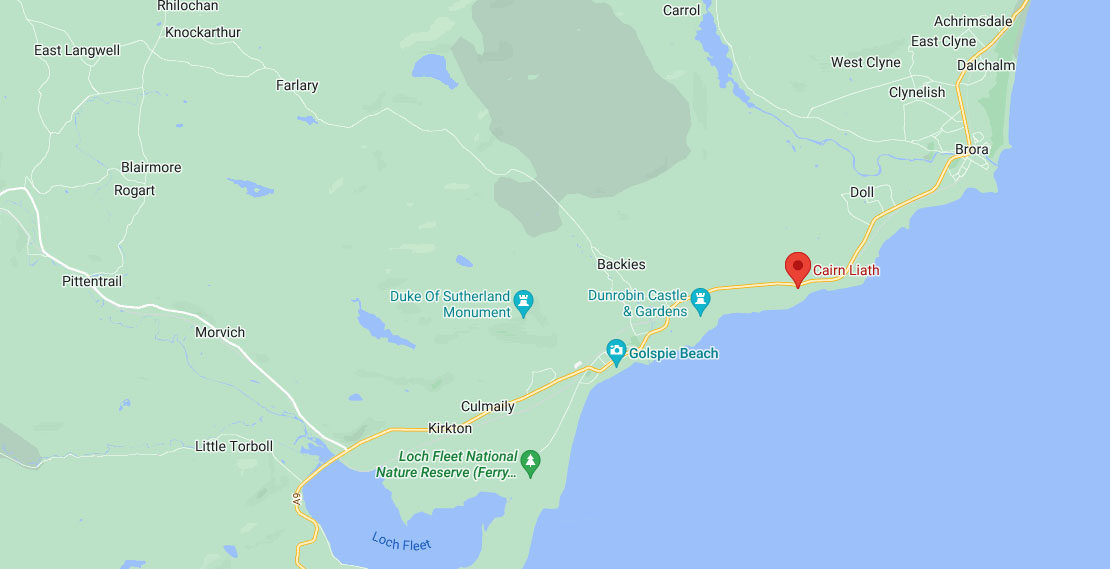
All information was correct at the time of writing, please check things like entry costs and opening times before you arrive.
Claim Your Free 6 Day Travel Itinerary:
Simply enter your email and we'll send it your way!

